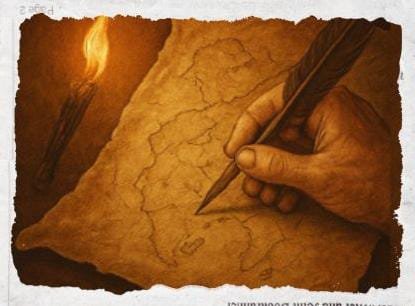
The Forgotten Art of Ancient Maps on Animal Hide
Before paper became common, humans found a remarkable canvas for their imagination: animal skin. On stretched sheets of parchment or vellum, explorers, scholars, and monks once sketched the boundaries of a world they barely knew — with ink, patience, and wonder.
A World Before Paper
In ancient times, crafting a map was an act of devotion. Long before printing presses and satellites, cartographers drew on parchment — thinly treated animal skin, often from goats, sheep, or calves. These materials were durable and smooth, allowing delicate ink work that could survive centuries.
Unlike papyrus, which cracked and faded, vellum maps could withstand moisture, travel, and even the chaos of wars. Every crease, stain, and faded line told a story — not just of geography, but of human curiosity and endurance.
The Art Behind the Map
Creating one map could take months. Cartographers prepared pigments from charcoal, plants, and minerals. Gold leaf and lapis lazuli sometimes adorned coastlines and kingdoms. These maps were not mere tools — they were works of art and symbols of power.
Each curve of ink marked both knowledge and imagination. Many maps of the medieval world depicted dragons, sea monsters, and unknown lands, revealing as much about belief as about geography.
Survivors of Time
Some of the earliest and most iconic examples still exist today.
The Hereford Mappa Mundi (England, c.1300) and the Catalan Atlas (Majorca, 1375) are masterpieces that blend theology, exploration, and artistry.
They show Jerusalem at the center of the world, oceans filled with mythical beasts, and borders drawn not by politics but by stories.
These surviving maps are windows into the minds of those who dared to draw the unknown.
From Skin to Screen
Centuries later, our maps now live in satellites and smartphones. We zoom, scroll, and navigate with ease — forgetting that once, the world was small enough to fit on a single piece of skin.
The ancient cartographers worked with candlelight and faith; today, we work with pixels and precision. Yet both are driven by the same instinct — to understand our place in the vastness of the Earth.
Reflection
The journey from parchment to pixels tells more than the story of technology. It reminds us that mapping is storytelling — and that even in the digital age, our urge to chart, name, and understand the world remains deeply human.
